The following behavioral and physiological changes are also noticeable in females after the onset of puberty:
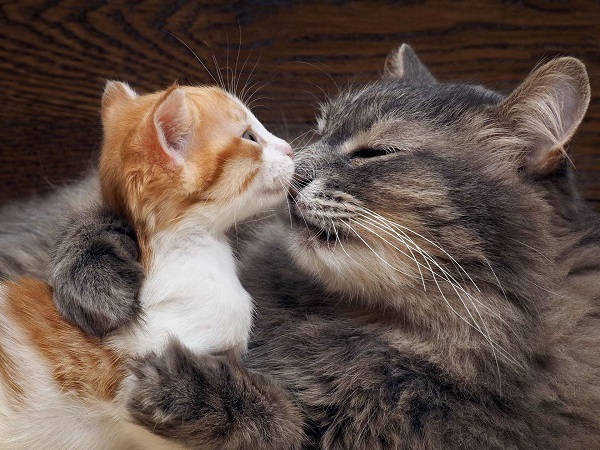
- The minimum and optimum ages at which a cat can become pregnant
- Signs of puberty
- When can a cat become pregnant?
- When best to breed with a cat
- Peculiarities of cat pregnancy
- How long after giving birth can you plan to conceive
- How often do cats give birth?
- The female cat and sexual maturity
- How do female cats become pregnant?
- Contraindications
- What to do
- When can a girl become pregnant?
- Artificial termination of pregnancy
- Medical
- Surgical
- How do I know if a cat is pregnant?
- When to expect kittens?
The minimum and optimum ages at which a cat can become pregnant
You can hardly doubt that a cat's reproductive function is doing an excellent job. The ability to conceive appears in the first year of life and lasts until death: there is nothing like the female menopause in cats.
If everything goes safely (the cat feels well and eats well), one female cat can give birth to over HUNDREDS of kittens during her lifetime. The cat's abilities are even more impressive.
Is it good or bad? Who doesn't like it? An ordinary cat owner would probably not like to find owners for dozens of offspring of his beloved cat, a breeder is happy, waiting for the fast payback of expenses for his own breeding cat and "rent" of other breeding cats.
However, only a beginner or irresponsible breeder will be happy:
It turns out the benefit is not that great. But conscious breeding to improve the type of any breed or just for fun is the subject of another article.
Now I'm going to talk about uncontrolled breeding …where a cat walks around… wants . And her owner is very does not want Her owner is very reluctant to have more furry tenants in the house.
Most young cats are capable of conceiving at 6 to 8 months of age. But pregnancy and childbirth at a young age is not healthy – the cat's body grows up to two years.
Representatives of some breeds are formed by three years and later. But even in this case, you need to be "on guard". A cat of a "late maturing" breed may become pregnant much before even the aforementioned average norm of six months.
The most important thing in the question of feline puberty is the first heat (the signal that the cat is ready to reproduce). It is often overlooked.
Because it goes without heartbreaking howls and rolling on the floor. That's why you should never assume that your cat is too young. Otherwise you might encounter an unwanted feline pregnancy.
Signs of puberty
During this period the follicles in the ovaries are growing, the mammary glands and uterus are actively developing, and the production of sex hormones rises.
Behavioral reactions common to the onset of heat (estrus):
Demands affection or becomes aggressive;
Rubs his feet and furniture;
Rolls on the floor;
eats poorly;
Tries to run outside;
meows in a hormone-altered voice;
marks territory to attract cats;
assumes a mating posture when stroked on the back.
1. Proestrus (1 to 3 days) – preparatory stage. It is characterized by swelling of the external genitals, scanty discharge. Sexual desire is not observed.
2. Estrus (5 to 10 days) – maximum sexual attraction.
Metaestrus (1-3 days) – aggression towards the male.
Anestrus (1.5-3 months) – resting stage. The cat won't let the cat come near.
When can a cat become pregnant?
A cat can become pregnant at puberty. But you should not rush with the mating. The cat is ready to mate at the age of 14-15 months, and the first two heat periods should be skipped. A cat should be healthy and strong before pregnancy, because carrying and nursing offspring takes a lot of energy. Early mating can have a bad effect on the health of the female and lead to the birth of sick kittens.
Timely and healthy offspring are to be expected with proper mating planning. The male and female should undergo a preliminary examination, receive worming medication and age-appropriate vaccinations.
Without sex control, a cat can give birth up to four or five times a year. A nursing female keeps the possibility of getting pregnant again. At the same time, frequent births are bad for the cat's body. The optimal frequency of mating is once every six months or less. The length of the rehab period between births should be more than five months.
The reproductive period lasts from the first heat until old age. The feline family has no such thing as menopause. It is not recommended that cats who are seven years old give birth. At this age, it is too difficult to give birth and kittens may be weakened or sick.
Prudent management of pregnancy and rest periods will ensure that the cat has a long, healthy life.
When best to breed with a cat
It is important to know when a cat is allowed to give birth for the first time. You should only let her near the cat when her genitals are fully formed. For the first mating, the best age is 10 to 15 months. If you follow these rules, there will be many newborn healthy kittens, and the mother's body will not suffer.
Important! It is not recommended to delay with the first mating until a year and a half. Experienced breeders advise skipping the first 2 heifers and then unbreeding after that.
Late insemination can disrupt the sexual cycle. In this case, the following problems may arise:
You need to make sure that the animal does not breed more than 3 times a year. To obtain purebred offspring, choose the appropriate male from professional breeders. Before mating, some rules should be familiarized with and subsequently adhered to:
- It is forbidden to use drugs that affect the heat. Hormones are enemies, leading to the emergence of dangerous diseases;
- The pet must be vaccinated against rabies, panleukopenia, rhinotracheitis, kalitsivirosis before mating. This should be done one month before mating. Additionally, a cat can be vaccinated against chlamydia and shingles;
- Worming treatment must be carried out 14 days before mating;
- On the day of mating, the female, like the male, has her claws trimmed. This is necessary to avoid injuries in case the pets behavior is aggressive;
- bathing a pet should be postponed before meeting the cat. Soap destroys the scent of natural pheromones that attract males.
Important! It is necessary to prepare in advance everything necessary for the expectant mother and her kittens.
Peculiarities of cat pregnancy
A pregnant cat should receive more care and attention. The most common signs of a pregnant cat are:
- Coloration and enlargement of the mammary glands. Such a symptom appears during the first pregnancy. The mammary glands are characterized by a red hue and swelling. They also become hot and increase in size. Usually it can be noticed only on the nipples from below;
- Increased duration of sleep. Normal sleep for a cat is 14 hours per day. A cat carrying kittens begins to sleep 2-4 hours more than usual;
- An increase or decrease in the cat's appetite. From the outside it may look as if she is eating for two. Also, her appetite may disappear altogether. The cat will not eat solid food, but only drink;
- Nausea and vomiting. Most often urges occur in the morning. This may occur three times a day;
- Frequent visits to the toilet;
- A display of aggression. The cat has a dislike for other felines from the first week of conception;
- Transformation into a house cat. The cat prefers to stay at home more and more often;
- An increase in body weight, the appearance of the belly.
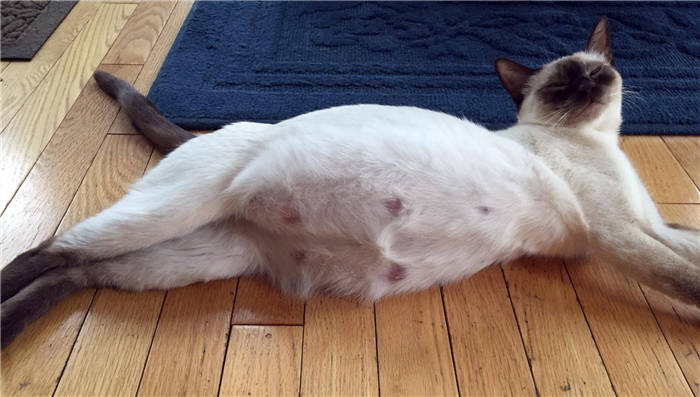
On average, cats carry kittens for 56-71 days. However, these figures are not exact, because they can also give birth to kittens prematurely or born prematurely. Also, nursing times may vary depending on the breed. Long-haired breeds carry their kittens for 62-72 days. The British breed and other short-haired breeds spend 58-68 days. If there are a lot of kittens, the nursing time is reduced to 58 days.
A place for the birth should be prepared by allocating a basket or a box. The place should be covered with a sterilized soft cloth. The diet should include special food for nursing kittens. On the sixth week, feeding your pet should increase to 5 times a day. Continuous monitoring of the kitty's body weight is important, because overfeeding can cause problems during delivery.
How long after giving birth can you plan to conceive
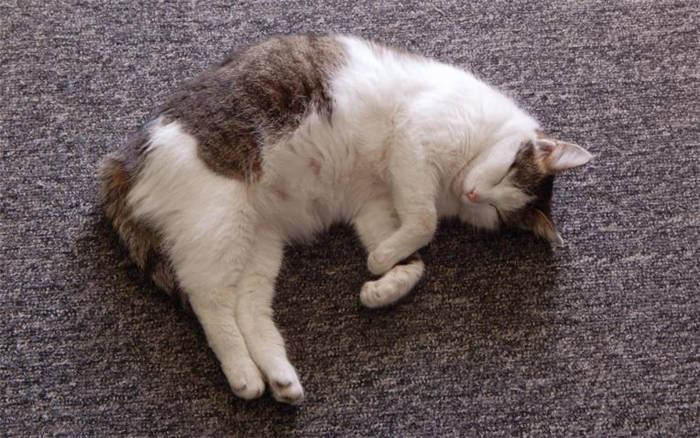
After giving birth, a cat's heat usually comes in 1.5 to 2 months. It is not uncommon to see signs of heat earlier – 2 weeks after calving. But you should plan next pregnancy not earlier than 5 to 6 months. Even if the previous calving and delivery took place without complications, the pet must regain her strength. The mother loses a lot of calcium, phosphorus, vitamins, and other components to forming her kittens. The mother loses a lot of calcium, phosphorus, vitamins, giving these and other components to the formation of the offspring. In addition, the female must regain her weight and normalize her hormonal background.
In this regard, responsible and competent breeders recommend planning births in a pedigree female not more often than 1 time in 1 – 1.5 years. Such an interval between births will allow to restore strength, to strengthen health for the next pregnancy.
How often do cats give birth?
The feline family is considered one of the most prolific for a reason. This fully applies to domestic beauties. During a year a mature cat is able to give birth 4-5 times. This frequency is typical for animals that have free access to the street. In the absence of control of sexual behavior, pregnancy can occur even in a lactating cat. This leads to exhaustion, weight loss, curvature of the spine, and the development of inflammatory diseases of the reproductive organs.
If the owner approaches the issues of breeding responsibly, he will not allow pregnancy in every heat. Between births, there should be a rehabilitation period of at least 4 to 5 months.
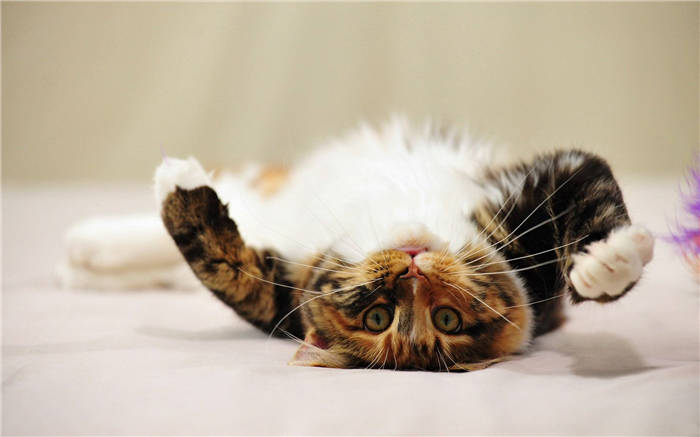
We recommend reading the article on how many times a year a cat gives birth. From it you will learn about the number of heifers per year, the optimal number of births, and the length of the reproductive age of a female cat.
The female cat and sexual maturity
This fluffy, miniature, four-legged lump of joy will become independent long before she is six months old. During this period of rapid growth, fluffy will go through important milestones almost every week:
- By week one: Opens his eyes, unfolds his ears and begins to crawl.
- By week three: Staggering, learning to use the toilet and eating wet food.
- By week 5: Struggle with congeners, snack on solid food and start of weaning.
- By week 10: Finding a welcoming home.
- By week 12: Will begin to lose its milk teeth one by one and reveal its adult eye color.
Soon after the first milk teeth appear, this chubby four- to six-month-old kitten will probably reach feline puberty (or puberty), which will mark the first estrous cycle (heat) of her life. The average female cat reaches this milestone before she is ten months old and almost full-grown.
However, breed and living conditions ultimately determine when a female becomes fertile. For example, Oriental shorthair, Siamese and feral (wild street) cats are known to reach maturity at about four months of age. Persian cats, on the other hand, can delay fertilization closer to 10-12 months of age.
How do female cats become pregnant?
In the Western Hemisphere, a cat's breeding season comes gradually as the weather gets warmer and the days are longer, and the mating season lasts from March to December. A female cat's hormones and fertility will also follow these seasonal changes due to her polyestrus (that is, she comes and goes in heat several times during the season).
When a queen has a six-day heat cycle, the hormonal surges cause behavioral changes, many of which are related to the desire to mate, such as
- increased affection (snuggling and snuggling up to each other).
- Fleeing or attempting to leave the house
- Decreased appetite
- More frequent genital grooming
- Adoption of mating posture (crying with hind end elevated).
- Spraying to alert the cat to her fertility (message encoded in her pheromones).
The queen in heat and the cat during mating will "woo" each other with an upset howl and scented traces of urine. Once mating is complete, the ovaries of the female cat release an egg (induced ovulation) ready for fertilization.
Contraindications
Cats are able to give birth to kittens until old age, as their reproductive function works until the death of the cat. But not every cat's body is able to bear and nurse their offspring without consequences.
In order that a cat's health is not harmed by continual childbirth, it is recommended to control the mating process after it has reached the age of 7 years:
The first point is not so easy to fulfill if the cat is constantly on the loose. That is why there is either spaying or contraception. Neutering at an older age is hard for cats, so it is rational to choose contraception to save them from unwanted mating and pregnancy. The most popular contraception today:
Before a cat takes contraception, a veterinarian should be consulted.
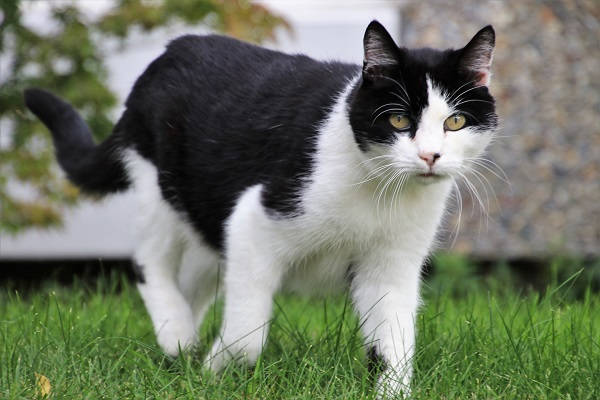
What to do
Can a reproductive function go on without heat? Actually, the total or partial absence of heat indicates a disorder in the cat's body, or some serious medical condition. Heifers disappear in the following cases:
- There has been a malfunction of the gland of internal secretion, so-called hypothyroidism
- Congenital abnormality in the form of a lack of ovaries
- Testes instead of ovaries, or hermaphroditism
- Peculiarities of the breed
- Polycystic disease, a neoplasm in the ovaries
- There are cases when a cat living in an apartment is isolated from other animals and therefore does not feel attracted to cats.
And finally we would like to add that every owner of a furry beauty should be aware not only of how cats become pregnant, at what age and how many times, but also of a lot of nuances connected with maintenance and breeding of feline offspring. Remember, cats, like humans, need time to recover after she has calved.
IMPORTANT! And after the cat is 7-8 years old, you need to forget about offspring. Sensitivity and love for your pet will ensure her long and healthy life.
When can a girl become pregnant?
A girl can get pregnant if her reproductive system is mature enough to conceive and carry a child. A pregnancy occurs only when a follicle comes out of her egg. This moment is called ovulation.
Normally, if you have a regular 28-day menstrual cycle, in which there are no abnormalities, ovulation usually occurs two weeks from the beginning of menstrual bleeding, ie somewhere around The fourteenth day of the cycle. .
According to scientists, the egg that has left the follicle lives an average of no more than 48 hours. But this is very rare. More often it lives for 24 hours.
The sperm that entered the genital tract of a woman can live for about 72 hours on average. In the rarest cases, this period increases to 11 days. Conventionally we take 72 hours.
High probability of getting pregnant between the 8th and the 20th day of the cycle
Overlapping terms of life of an egg and a sperm cell, we can say that favorable days for conception, ie days when a girl could get pregnant – assuming a regular menstrual cycle (clear 26-day or clear 28-day cycle), is the middle of the cycle plus or minus five or six days from this middle.
On this basis, it is safe to say: if these days there is unprotected intercourse or torn condom with a protected, the likelihood of pregnancy in this situation high enough . During this period a girl might get pregnant, and the relevant question becomes: what to do if a girl gets pregnant? The answer to it everyone should give themselves.
When the probability of getting pregnant during unprotected intercourse is low?
On all other days. If intercourse occurred closer to the beginning of menstruation, for example, two or three days before your period or at the end of it – on the fourth, fifth, sixth and seventh day of the cycle, the probability of pregnancy is lower. But not 100%. Why is this so? Because sometimes it happens that the sperm lives longer, or ovulation shifts to a later or earlier date. Therefore, all calculations are rather arbitrary.
Artificial termination of pregnancy
Often cats have no medical indication for artificial termination of pregnancy. Unviable kittens die intrauterine by themselves. Then they come out naturally or are removed surgically. An abortion of a cat is in most cases performed at the owner's request.
There are two types of cat abortion: medical and surgical.
Medical
Surgical
- No sterilization: incisions are made in the horns of the uterus, through which the fetuses are removed. The operation is done on days 15-36 of pregnancy. It is a complex and expensive surgical intervention.
- With sterilization: the uterus and ovaries are removed. The surgery is done before the 7th week of pregnancy.
Often, medical abortions also end with surgery because of the high risk of complications.
Abortion in most cases leads to the loss of reproductive function of the cat. In addition, the animal receives serious stress. That's why it's better to spay a cat before she gets pregnant.
A female cat spends a lot of her body resources on pregnancy and childbirth. For cats to have time to recover, experienced breeders breed them no more often than once a year. It is worth noting that this process does not add to the animal's health, but rather shortens the life of the female and puts her at risk of various complications. This is why you should breed only animals that are of value for breeding work. Unbred cats are better to sterilize.
How do I know if a cat is pregnant?
It is impossible to tell in the first days and weeks whether a cat is pregnant or not. It usually lasts until the end of its due date, even with a successful mating (early termination is also possible). This is due to the fact that conception does not occur immediately. Ovulation in a cat does not occur spontaneously, it is triggered by mating with the male. The release of luteinizing hormone leads to the release of eggs from the ovary. It takes three to four days. Then fertilization takes place within 24 hours. Embryos do not attach to the uterine wall until 1-1.5 weeks after mating.
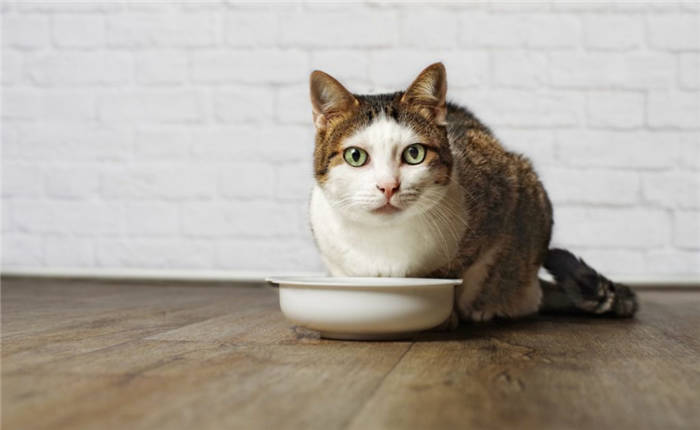
Early signs of pregnancy begin to appear after the hormonal background begins to change, but they are not always noticeable. The conception can be indicated by increased sleepiness – the cat sleeps for 2-4 hours a day more than usual. The animal often becomes more passive and refuses to play active games, and its eating habits may change. The pet begins to eat more, but loss of appetite is not excluded, if she is suffering from nausea due to toxemia.
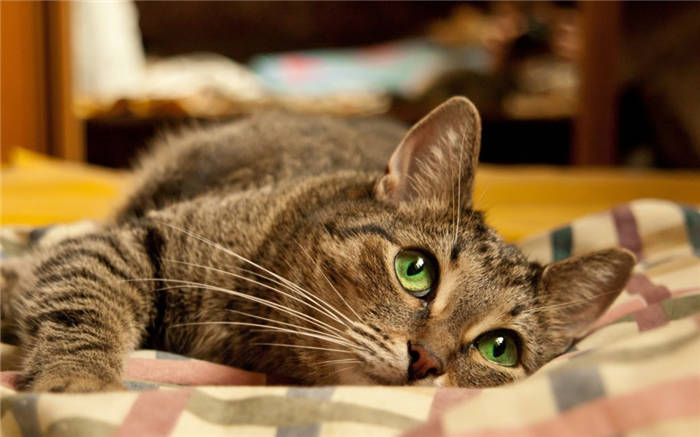
Behavioral signs of conception vary from pet to pet. Some cats become more affectionate and contactable, while others, on the contrary, prefer to spend time alone. It happens that the pets show aggression, especially toward cats. This is more often observed in representatives of bald breeds. During the first pregnancy the described changes are more pronounced than in subsequent pregnancies.
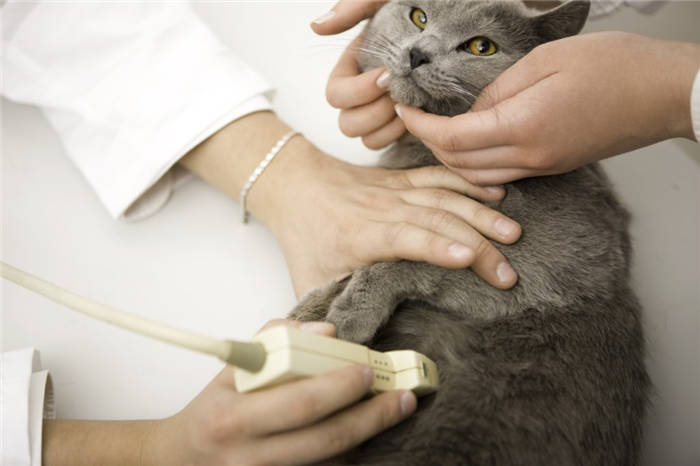
Veterinarian can state that a cat is pregnant about 20 days after mating – fetuses are not only visible on ultrasound, but also palpated, and the concentration of the hormone relaxin rises in the blood. From 4 weeks on, there are other signs that the cat is carrying the offspring: the abdomen is rounded, the nipples swell, and their coloring becomes more intense.
When to expect kittens?
Pregnancy in cats, both first and subsequent, lasts from 55 to 71 days. The average period is 60 to 67 days. The length of this period depends on several factors:
Read also: Causes and symptoms of false pregnancy in cats, treatment of the unusual condition and its prevention
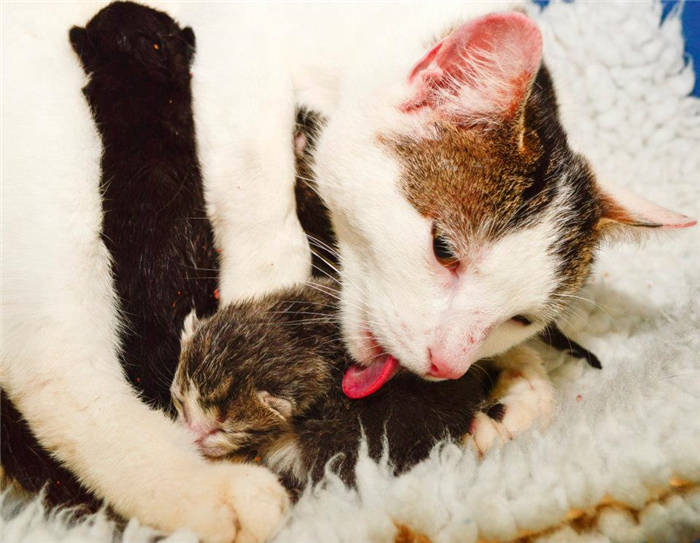
- Number of kittens. If there are many of them, delivery may come earlier, but the numerous litter in first-born females is rather an exception, they rarely give birth more than 3.
- Heredity. The length of the period of carrying kittens in a particular cat is largely due to the length of that period in females in her lineage.
- Composition. Slim pets carry kittens faster than overweight individuals.
- Age. In early and late pregnancy, labor often begins early.
- Breed. Large long-haired cats (Maine Coons, Nevsky Masquerades, Norwegian and Siberian cats) bear cubs longer than short-haired, medium or small-sized (Abyssinian, Devon-rax, Russian Blue). The former have 62-71 days, the latter have 58-68 days. It has been noticed that mongrels carry healthy kittens faster than pedigree cats, despite their higher fertility.
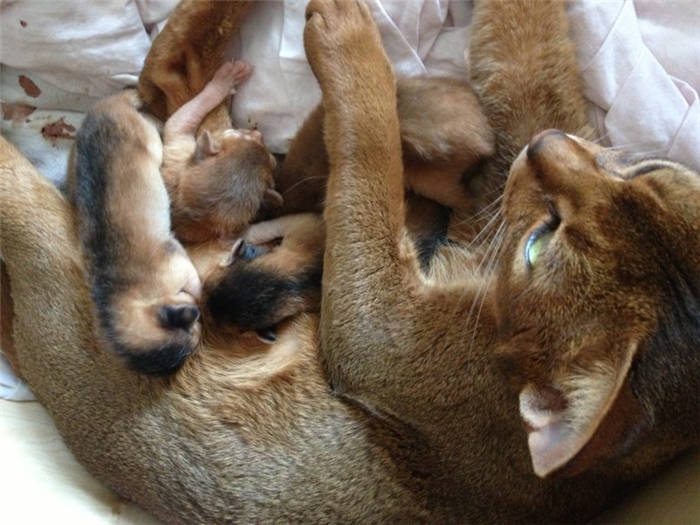
Sometimes the gestation period is reduced in the presence of factors provoking the premature onset of labor. These can be severe fright, stress, injuries, and infections. Also, labor can start early if one or more fetuses die in utero. Offspring born before 51 days of age are considered non-viable.






